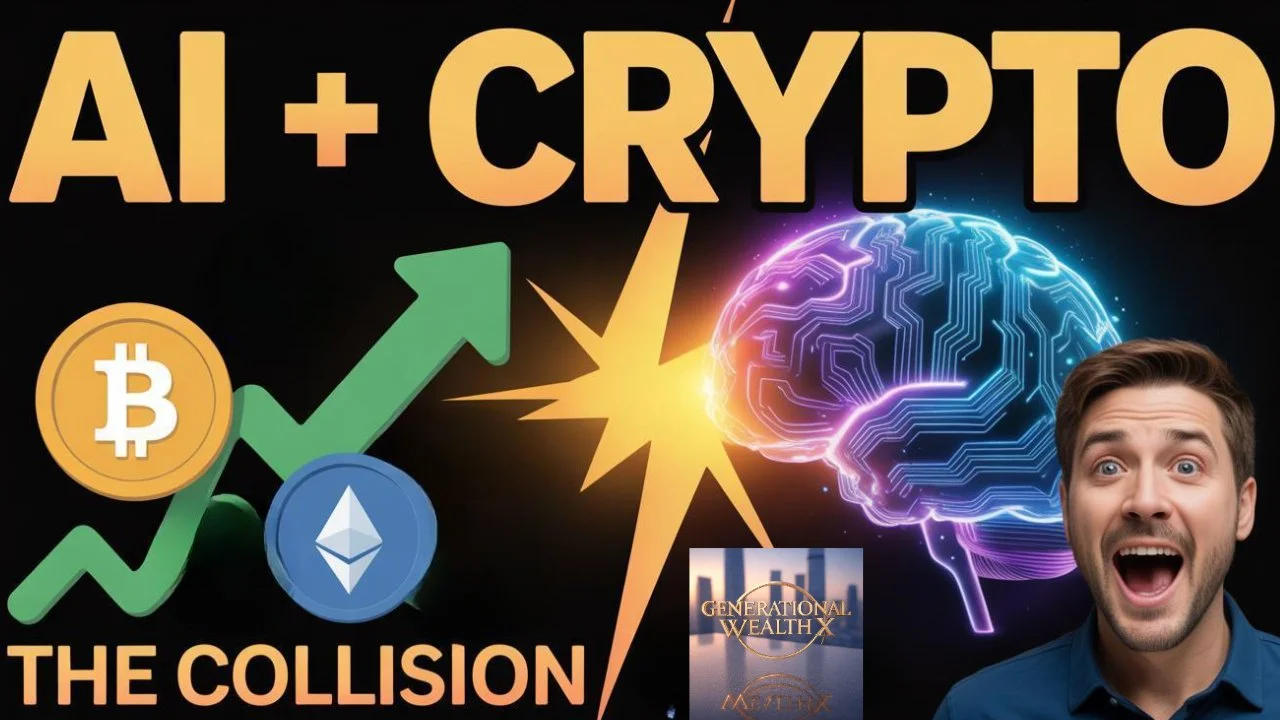Is Solana The Next Ethereum? Let's Break It Down
For years, Ethereum has worn the crown, but we've all felt the pain of its crippling gas fees. Now, a rival has emerged, built for insane speed and near-zero cost. Can this challenger, Solana, actually dethrone the giant, or is it just a pretender?
Is the crypto world big enough for two kings?
For years, Ethereum has worn the crown, but we've all felt the pain of its crippling gas fees. Now, a rival has emerged, built for insane speed and near-zero cost. Can this challenger, Solana, actually dethrone the giant, or is it just a pretender?
By the end of this article, you'll know exactly where the smart money might be headed.
The Ethereum Problem: Speed Bumps on the Highway
For all its strengths, using Ethereum can feel slow and expensive. As the original smart contract platform, it has earned tremendous trust and built a massive community of developers. But its own popularity has created serious traffic jams.
The numbers tell the story:
At its core, the Ethereum base layer can only handle about 15 to 30 transactions per second. When the network gets busy—think popular NFT mints or DeFi rushes—it turns into a bidding war to get transactions through.
Those fees, known as gas, can skyrocket. While recent upgrades and Layer-2 solutions have helped, fees remain unpredictable and can jump to several dollars during peak times, making small transactions totally impractical.
That frustration created the perfect opening for a new kind of blockchain.
Enter Solana: Built Different from Day One
Launched in 2020, Solana brought a revolutionary concept to the table: Proof-of-History. This innovation timestamps transactions before they're processed, allowing the network to handle massive amounts of activity simultaneously.
The Performance Gap is Staggering
Where Ethereum's speed is measured in seconds, Solana's is measured in milliseconds. The network handles a real-world average of about 870 transactions per second, with observed peaks exceeding 4,700 TPS.
And the cost? An average Solana transaction costs just a tiny fraction of a cent.
This combination of incredible speed and ultra-low costs has made Solana the go-to platform for applications that need to be fast and affordable:
High-frequency trading platforms
Social media applications
Blockchain gaming
Micro-payment systems
Head-to-Head: The Ultimate Blockchain Showdown
Let's break down how these two titans really compare across the metrics that matter.
Speed and Scalability: Solana Dominates
On the base layer, it's not even a contest. Solana's thousands of potential transactions per second blow Ethereum's 15-30 out of the water.
Yes, Ethereum's Layer-2 solutions can deliver faster speeds, but they add extra steps and can make the user experience feel disconnected. Solana delivers its performance right on the main chain—no compromises.
Cost Efficiency: Another Win for Solana
Solana maintains a huge advantage here. Its fees are tiny and predictable, perfect for micro-payments or high-frequency transactions. Ethereum's fees, while improving, remain a significant barrier for many users and applications.
Ecosystem and Adoption: The Plot Thickens
This is where things get interesting.
Ethereum still leads with:
The largest developer community (thousands of monthly active developers)
The most capital locked in DeFi protocols
The most established infrastructure and tooling
But Solana is catching up at breakneck speed:
Daily active users: 1.5-2.5 million (Solana) vs. 400,000-600,000 (Ethereum)
Rapidly growing DeFi ecosystem
Increasing institutional adoption
Decentralization and Security: Ethereum's Stronghold
This is where Ethereum truly shines. The network is secured by over one million staking validators (though the number of unique node operators is much lower, in the thousands), making it incredibly decentralized and resilient against attacks.
Solana operates with approximately 3,200 validators. However, running a Solana validator requires powerful, expensive hardware, which has sparked ongoing debates about centralization concerns.
The Honest Truth: Acknowledging the Downsides
No platform is perfect, and we need to be real about the drawbacks.
Solana's Achilles Heel: Network Stability
Solana's biggest weakness has been network reliability. The platform has experienced several high-profile outages that damaged its reputation. While uptime has improved significantly in 2025, claiming 100% reliability isn't accurate—minor incidents and slowdowns still occur.
Ethereum's Challenge: Evolution Speed
Ethereum's main criticism centers on its slow core technology evolution and reliance on a complex web of Layer-2 solutions to solve scaling problems. While these solutions work, they can confuse newcomers, and moving assets between layers can be slow and costly.
The critical question: Can the main network evolve quickly enough to maintain its competitive edge?
The Verdict: Who Actually Wins?
Here's the truth: asking "Is Solana the next Ethereum?" might be the wrong question entirely.
These blockchains appear built for fundamentally different purposes:
Ethereum is playing the long game, prioritizing security and decentralization to become the global settlement layer for high-value assets—the platform where ultimate trust matters most.
Solana is all about speed and scale, positioning itself as the engine for a new generation of applications that need to feel as fast and affordable as the web apps we use daily.
The Multi-Chain Future
Instead of one winner taking all, the future likely features multiple thriving chains. Ethereum and Solana might not be direct rivals, but complementary pillars of a decentralized internet:
Ethereum: The trusted, secure foundation for high-value transactions
Solana: The high-performance layer for daily activity and mass adoption
What's Your Take?
Which blockchain are you betting on for the future? Are you team Ethereum, team Solana, or team "both have their place"?
Join the conversation by leaving your thoughts in the comments below, and don't forget to join our insiders group at
GenerationalWealth.biz for exclusive crypto insights.
The Coming Collision: How AI Will Completely Transform Crypto 🚀🤖
Forget the old playbook. The next wave in crypto isn’t about catching the latest meme coin or timing the next bull run—it’s about the explosive convergence of Artificial Intelligence and Cryptocurrency. This isn’t hype. We’re witnessing the dawn of a new digital era, and if you’re reading this, you’re already ahead of the curve.
Welcome to Generational Wealth, where we turn knowledge into legacy. Quick heads up: I’m not a licensed financial advisor. This is all for educational purposes—crypto is wild, so never invest more than you can afford to lose and always do your own research!
1. AI-Powered Trading & Analytics: Outsmarting Human Emotion
Let’s get real: the 24/7 crypto grind is a mental marathon. Emotional trades, FOMO, and fatigue can destroy even the most promising portfolios. Enter AI. Today’s trading bots aren’t just running on basic rules—they’re sophisticated machine learning engines that digest live market data, on-chain activity, news, and even social media sentiment.
Platforms like Token Metrics are already leveraging AI to deliver actionable, data-driven insights and crypto ratings. These bots can:
Trade automatically and emotionlessly
Predict downturns and manage risk
Adapt strategies in real-time
Why does this matter? Because AI can keep up with the market’s pace, spot patterns humans miss, and remove the emotional pitfalls that trip up most investors.
2. Decentralized AI Marketplaces: Intelligence Goes Global
Until now, cutting-edge AI was locked up by Big Tech. Blockchain breaks down these walls. Decentralized AI marketplaces—like the Artificial Superintelligence Alliance (ASI), born from the merger of Fetch.ai, SingularityNET, and Ocean Protocol—are flipping the script.
Here’s what’s changing:
AI models and data become tokenized assets—anyone can buy, sell, or trade them securely.
Developers worldwide can monetize their AI, while researchers access valuable data without sacrificing privacy.
A global, collaborative ecosystem accelerates innovation, making AI more accessible and less centralized.
This is the open market for intelligence. The next Google or OpenAI could be a decentralized, community-owned protocol.
3. Security & Governance: AI as Crypto’s Digital Immune System
Crypto’s reputation for hacks and scams is well-earned. But AI is quickly becoming blockchain’s best defense. Imagine a digital immune system: AI algorithms monitor networks, learn normal patterns, and flag threats in real-time—often stopping them before they cause damage.
But the revolution goes deeper:
AI-powered DAOs: In decentralized autonomous organizations, AI can manage treasuries, adjust investments, and stabilize projects using live data.
Smarter, more resilient systems: Combining AI and blockchain means more robust, self-improving decentralized networks.
This isn’t just patching vulnerabilities—it’s building a smarter foundation for the future of finance.
4. Tokenizing AI Services: Power to the People
Here’s where things get wild. Imagine buying access to an AI’s brainpower—not through a subscription, but as a digital token. That’s the new frontier.
AI services become tokens: Need AI-driven analytics for your business? Buy tokens for on-demand access.
Developers monetize AI tools: Anyone can build, sell, or license their AI, sharing in the economic upside.
New economic models: Community ownership, pay-per-use, and shared rewards become the norm.
This democratizes access to powerful AI, breaking the monopoly of big corporations and opening doors for small businesses and individuals alike.
5. Intelligent Smart Contracts: The Next Evolution
Smart contracts are the backbone of DeFi, but they’re still stuck in the past—rigid, rule-based, and unresponsive to new information. AI is about to change that.
AI-augmented smart contracts: Imagine a DeFi protocol where AI adjusts interest rates on the fly to optimize liquidity and minimize risk.
Real-world data integration: Supply chain contracts that predict shipping delays and reroute goods automatically.
Projects like Cortex are pioneering AI models that run inside smart contracts, enabling truly autonomous, adaptive systems.
This is the ultimate convergence: AI and blockchain teaming up to create digital infrastructure that doesn’t just execute code—it thinks, adapts, and evolves.
Why This Matters: Your Window of Opportunity
AI is rewriting the rules of crypto—from trading and security to marketplaces and smart contracts. The projects that master this fusion will be the giants of the next decade. The window to get ahead is closing fast.
How will you adapt? Share your thoughts in the comments below. Want to go deeper? Join our insiders group at GenerationalWealth.biz and be part of the movement shaping the future of digital assets.
What’s your biggest question about the AI-crypto convergence? What projects are you watching? Drop your thoughts below or suggest your next deep-dive topic!
Stay curious, stay smart, and remember: fortune favors the well-informed. 💡



